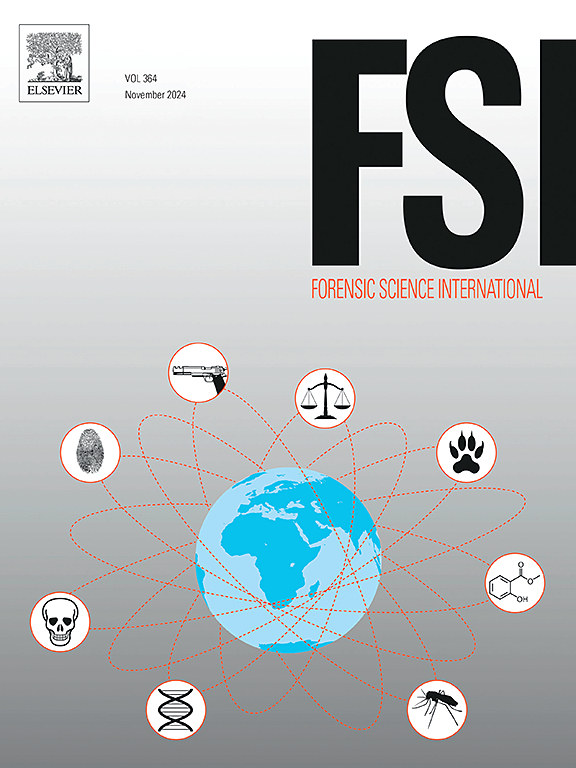Textile fibres in the respiratory tract part 1: A background study
IF 2.2
3区 医学
Q1 MEDICINE, LEGAL
引用次数: 0
Abstract
Fibre traces recovered from the respiratory tract have the potential to be informative in cases of suspected smothering. In order to interpret such findings, it is important to understand the background population of fibres in respiratory tract such that the probabilities of adventitious recovery of such fibres can be assigned. This study builds upon previous studies by first testing various recovery methods on both living participants and cadavers. Once the most suitable recovery methods were identified, background sampling of fibres was carried out on living volunteers in the nostrils (using swabs) and oral cavities (using a rinse and filter method), as well as on cadavers in the nasal cavity and trachea (using AccuTrans® mould). A population study was carried out on these fibres to understand the occurrences of each generic class and colour of fibre groups and their lengths in these regions. A deeper analysis of non-differentiated fibre groups was also carried out to assess the group sizes expected in the background population. Ultimately, the results of the population study align closely in terms of frequencies with the general background population of other surfaces. Fibre group sizes were also generally small, with the largest group being three fibres.
呼吸道中的纺织纤维,第 1 部分:背景研究
在疑似窒息病例中,从呼吸道中恢复的纤维痕迹有可能提供信息。为了解释这些发现,重要的是要了解呼吸道纤维的背景种群,以便可以分配这些纤维的意外恢复的概率。这项研究建立在先前的研究基础上,首先在活着的参与者和尸体上测试了各种恢复方法。一旦确定了最合适的回收方法,就对活着的志愿者的鼻孔(使用拭子)和口腔(使用冲洗和过滤法)以及尸体的鼻腔和气管(使用AccuTrans®模具)进行纤维的背景采样。对这些纤维进行了人口研究,以了解这些地区纤维群的每种属类和颜色及其长度的出现情况。对未分化纤维组进行了更深入的分析,以评估背景人群中预期的组大小。最终,人口研究的结果在频率方面与其他表面的一般背景人口密切一致。纤维组的大小一般也很小,最大的一组是三根纤维。
本文章由计算机程序翻译,如有差异,请以英文原文为准。
求助全文
约1分钟内获得全文
求助全文
来源期刊

Forensic science international
医学-医学:法
CiteScore
5.00
自引率
9.10%
发文量
285
审稿时长
49 days
期刊介绍:
Forensic Science International is the flagship journal in the prestigious Forensic Science International family, publishing the most innovative, cutting-edge, and influential contributions across the forensic sciences. Fields include: forensic pathology and histochemistry, chemistry, biochemistry and toxicology, biology, serology, odontology, psychiatry, anthropology, digital forensics, the physical sciences, firearms, and document examination, as well as investigations of value to public health in its broadest sense, and the important marginal area where science and medicine interact with the law.
The journal publishes:
Case Reports
Commentaries
Letters to the Editor
Original Research Papers (Regular Papers)
Rapid Communications
Review Articles
Technical Notes.
 求助内容:
求助内容: 应助结果提醒方式:
应助结果提醒方式:


